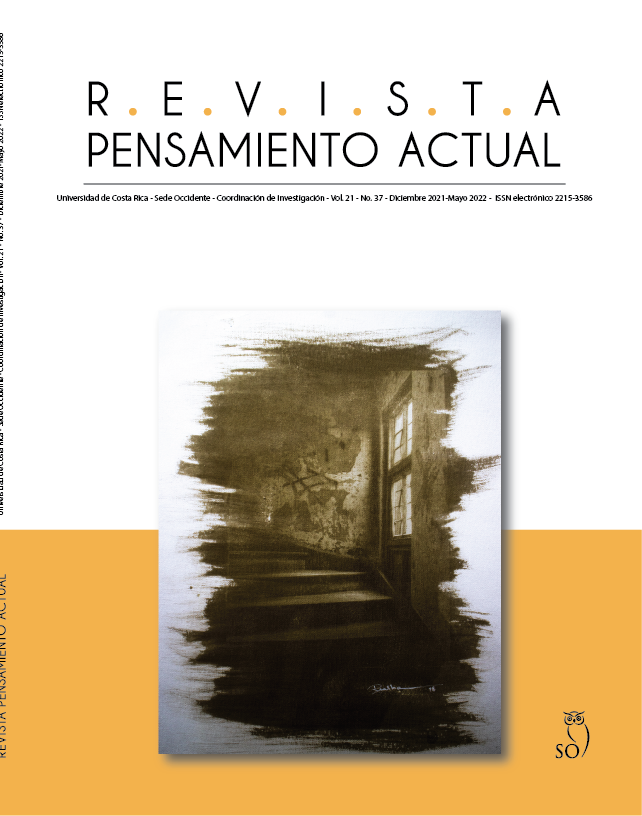Abstract
The article provides a baseline of scientific knowledge on quantified ions in freshwater bodies, in particular five rivers in the Drake Bay area; data to understand at a macro level the risks and vulnerabilities of the ecosystem, as well as to generate alerts in the protection of water resources. A total of 84 representative samples from the Drake, Agujitas, Claro, Llorona and Sierpe rivers were analyzed in three intensive sampling campaigns (two during the summer season and one in winter, corresponding to the years 2019 and 2020). The dissolved ions of chlorides, sulfates, calcium, sodium, magnesium, potassium, zinc, lead, cadmium, copper, arsenic, manganese and mercury were determined; to be used as indicators of environmental quality and human health. The results allow us to highlight that the excess anion concentration comes mainly from the impact of agricultural activity in the study area, a situation that is more evident in the Drake, Llorona and Agujitas rivers, compared to the Claro and Sierpe rivers; However, all the rivers studied present ionic concentrations that allow them to be classified from the chemical point of view, as healthy rivers with an acceptable quality, once they have been compared with the applicable national regulations. On the other hand, the rainy season improves the ionic chemical balance of the salts dissolved in the water, thanks to the dilution factor and the oxidation capacity of the organic mass load that transits over the rivers. Finally, there is no evidence of dissolved heavy metals that favor bioaccumulation processes in the aquatic ecosystems under study.
References
Acuña-González, J., Vargas-Zamora, J. A., Gómez-Ramírez, E., y García-Céspedes, J. (2004). Hidrocarburos
de petróleo, disueltos y dispersos, en cuatro ambientes costeros de Costa Rica. Revista de Biología Tropical, 52, 43–50. http://www.scielo.sa.cr/scielo.php?script=sci_arttext&pid=S0034-77442004000600005&lng=en&nrm=iso&tlng=es
Alvarado, J. J., Beita-Jiménez, A., Mena, S., FernándezGarcía, C., & Guzmán-Mora, A. G. (2015). Osa conservation area (Costa Rica) coral ecosystems: Structure and conservation needs [Ecosistemas coralinos del Área de Conservación Osa, Costa Rica: Estructura y necesidades de conservación]. Revista de Biologia Tropical, 63(April), 219–259. https://doi.org/10.15517/rbt.v63i1.23105
Arellano, F. y Vargas, A. (2000). Casos De Contaminación Por Intrusión Salina En Acuíferos Costeros De La Península De Nicoya (Costa Rica). Revista geológica de América Central. 0(25), 8. https:// revistas.ucr.ac.cr/index.php/geologica/article/ view/8540/8065 Ashraf, M. A., Maah, M. J., y Yusoff, I. (2010). Water Quality Characterization of Varsity Lake. CODEN ECJHAO E-Journal of Chemistry, 7, 973–4945. http://www.e-journals.net
AWWA. (1999). Standard Methods for the Examination of Water and Wastewater Part 1000 Standard Methods for the Examination of Water and Wastewater. American Water Works Association, 1–541.
Beita, W. (2008). “Caracterización fisicoquímica de las aguas superficiales de la cuenca del río Rincón
en la Península de Osa, Puntarenas, Costa Rica.” Bolaños-Alfaro, J. D., Cordero-Castro, G., y SeguraAraya, G. (2017). Determinación de nitritos, nitratos, sulfatos y fosfatos en agua potable como indicadores de contaminación ocasionada por el hombre, en dos cantones de Alajuela (Costa Rica). Revista Tecnología En Marcha, 30(4), 15. https:// doi.org/10.18845/tm.v30i4.3408
Casado, J., Calvo, D., Monterde, E., Alfonso, P. (2013). CUENCA DEL LLOBREGAT EN EL BAGES.
–296.
Costa Rica Poder Ejecutivo. (2015). Reglamento para la Calidad del Agua Potable N° 38924-S. In Diario Oficial La Gaceta (Vol. 1, Issue 170). http://www.pgrweb.go.cr/scij/Busqueda/Normativa/Normas/nrm_texto_completo.aspx param1=NRTC&nValor1=1&nValor2=80047&nValor3=101480&strTipM=TC
Cravo, A. (2017). Nutrient concentrations in coastal waters: Impact of the Guadiana River. Ciencias Marinas, 29(4), 483–495. https://doi.org/10.7773/ cm.v29i4.167
Dávila, P. M., y Valdés, J. (2015). Variabilidad temporal de las masas de agua costeras en bahía San Jorge. Antofagasta , Chile 23 ° S ( 2008-2012). 50, 61–80. https://doi.org/10.4067/S0718-19572015000100006
De Alba, M. I. D. (2007). Determinación de subtrazas de cobre en aguas naturales previa preconcentración con discos de SDB Modificados. https://rodin.uca.es/bitstream/handle/10498/17203/ Trabajo Fin De Máster Margarita Díaz de Alba.pdf sequence=1&isAllowed=y
Escrig, I., y Morell, I. (1996). Origen y comportamiento de Cd, Cr, Cu, Pb y Zn en el subsistema acuifero de la Plana de Castellon. Estudios Geologicos, 52(5–6), 259–268. García-Avilés, J. (2002). Biodiversidad de los humedales del Parque Regional del Sureste. II. Heterópteros acuáticos. In Centro de Investigaciones
Ambientales de la Comunidad de Madrid “Fernando González Bernáldez” (Issue January).
Grunberger, O y Janeau, J. (1991). Geoquímica de las
lluvias, de las aguas de escurrimiento.
La Gaceta. (2007). Diario Oficial La Gaceta N. 178, lunes 17 de setiembre 2007. https://www.aya.
go.cr/centroDocumetacion/catalogoGeneral/Reglamento evaluación y clasificación de calidad de cuerpos de agua superficiales.pdf Lazo-Páez, A., y Solís-Castro, Y. (2019). Interpretación de Calidad de Agua para Casos con Potencial Intrusión Salina. Revista Tecnología En Marcha, 32, 82–96. https://doi.org/10.18845/tm.v32i10.4883
Comments

This work is licensed under a Creative Commons Attribution-NonCommercial-ShareAlike 3.0 Unported License.
Copyright (c) 2021 Pensamiento Actual

